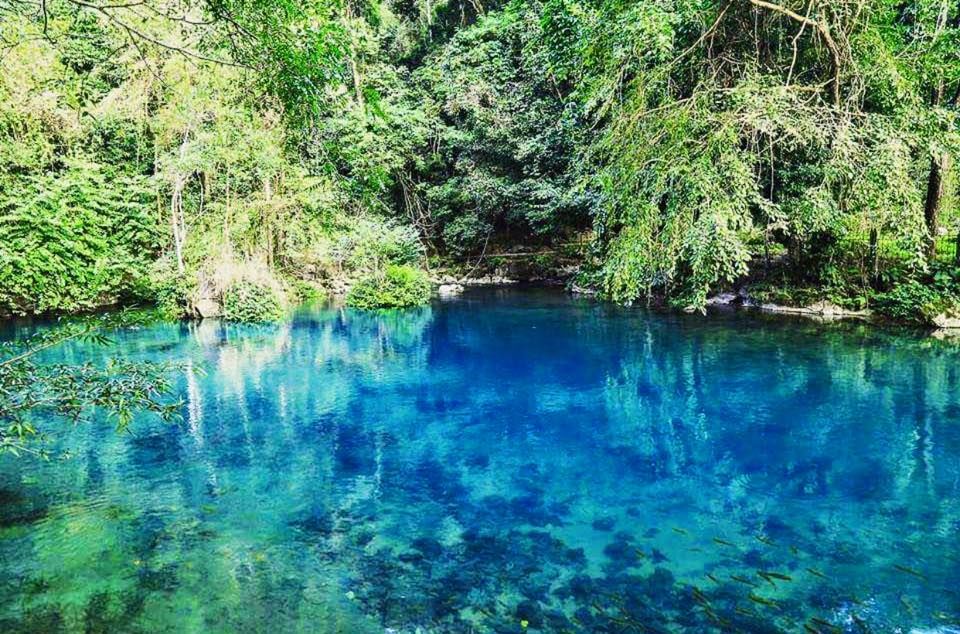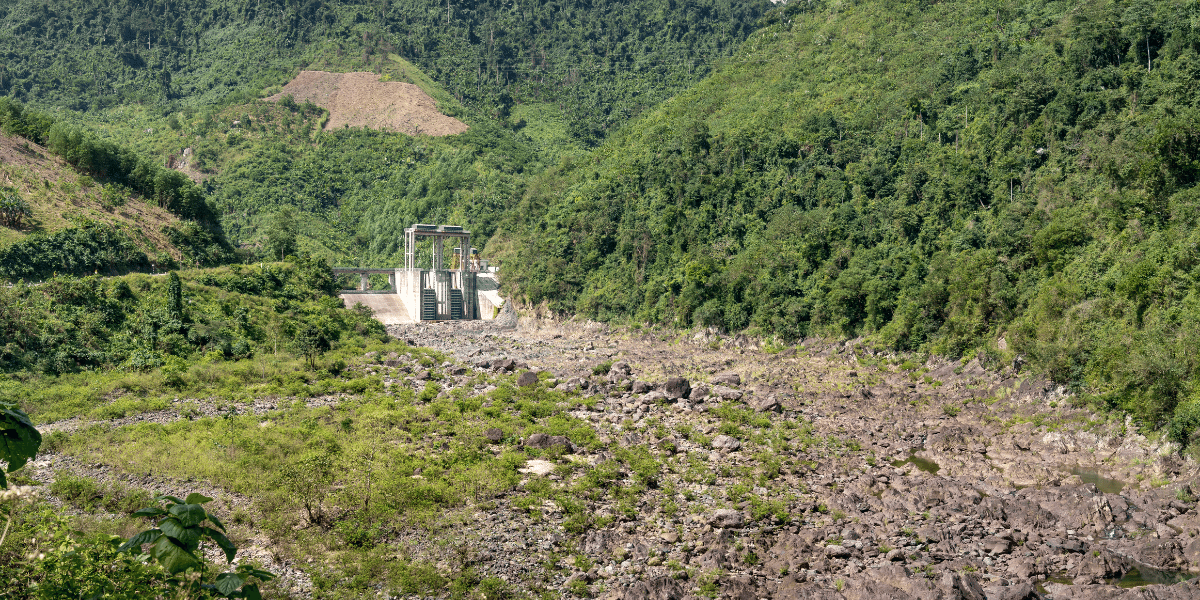Top National Parks in Vietnam: Explore the Country’s Best Natural Wonders
Last Updated on 6 October, 2024 by admin
Vietnam is home to a diverse and rich network of national parks, each offering a unique glimpse into the country’s natural beauty and biodiversity. These protected areas showcase everything from lush tropical rainforests and towering limestone mountains to pristine beaches and vibrant wetlands. The national parks of Vietnam play a crucial role in conserving the country’s wildlife and preserving its ecological balance. For nature enthusiasts and adventure seekers, exploring these parks offers an opportunity to immerse themselves in breathtaking landscapes and encounter rare species of flora and fauna.
Top National Parks in Vietnam
Vietnam’s national parks are a treasure trove of natural beauty, rich biodiversity, and cultural significance. Each park offers a unique experience for nature enthusiasts, adventurers, and those seeking a deeper connection with Vietnam’s incredible landscapes. Below are some of the most remarkable national parks in the country, with personal experiences adding depth to the journeys.
Phong Nha – Kẻ Bàng National Park (Quảng Bình)
Phong Nha – Kẻ Bàng is renowned for its awe-inspiring cave systems, most notably Sơn Đoòng, the largest cave in the world. The park’s expansive karst landscape, formed over 400 million years ago, features towering limestone mountains, deep caverns, and underground rivers. The park’s lush jungle and natural hot springs further enhance its appeal to explorers.
- Activities: Caving adventures in Sơn Đoòng, Phong Nha Cave, and Paradise Cave, kayaking on the Chày River, and challenging jungle trekking routes.
During my visit, stepping inside the grand Sơn Đoòng Cave felt like entering an entirely new world—its vastness was humbling. The natural skylights that bathe the cave in light created an ethereal atmosphere, unlike anything I had experienced before. The adventure was complemented by an exhilarating kayak ride on the Chày River, where the silence of the jungle was occasionally interrupted by birdsong and the sound of paddles slicing through the water. The combination of caving, trekking, and exploring the jungle made my time in Phong Nha unforgettable.

Cúc Phương National Park (Ninh Bình)
Cúc Phương National Park, Vietnam’s oldest national park, is a haven of tropical biodiversity, with its dense rainforest, ancient trees, and limestone landscapes. The park is home to many endangered species, including the rare Delacour’s langur, making it an important site for conservation efforts. The cultural significance of the park, which sits in an area with a rich history of ethnic Mường people, adds an extra layer of intrigue for visitors.
- Activities: Hiking through the jungle, visiting the Endangered Primate Rescue Center, exploring prehistoric caves, and engaging with the local Mường culture.
My journey through Cúc Phương was both physically rewarding and emotionally moving. Trekking under the vast canopy of ancient trees, I marvelled at the diversity of plant and animal life around me. The Thousand-Year-Old Tree was a particular highlight—standing in its shadow felt like being in the presence of a giant. Visiting the Endangered Primate Rescue Center was an eye-opening experience, as I learned about the vital work being done to protect Vietnam’s endangered wildlife. The interaction with the local Mường villagers also gave me a deeper appreciation for the cultural connection between the people and the land.
Ba Bể National Park (Bắc Kạn)
Nestled in the northern mountains, Ba Bể National Park is famous for its Ba Bể Lake, the largest natural freshwater lake in Vietnam. Surrounded by karst mountains and lush forests, the park is a stunning natural retreat. Waterfalls, caves, and Tày ethnic villages scattered around the lake add to the park’s charm, offering a peaceful yet enriching experience for visitors.
- Activities: Boat cruises on Ba Bể Lake, visiting Puong Cave and the spectacular Dau Dang Waterfall, trekking through forests, and exploring the Tày ethnic culture.
Sailing across Ba Bể Lake early in the morning was an experience I’ll never forget. The mist gently rising from the water created a mystical ambiance, while the surrounding cliffs reflected perfectly in the still waters. I was fortunate enough to stay in a Tày village for a night, where I was treated to home-cooked meals and stories of the local people’s connection to the land. Exploring Puong Cave by boat, with its impressive stalactites hanging from the cave’s mouth, felt like an adventure through hidden parts of the world. Ba Bể’s tranquillity left me feeling deeply connected to nature and the simplicity of rural life.

Cát Bà National Park (Hải Phòng)
Located on Cát Bà Island in northern Vietnam, Cát Bà National Park is a rich blend of dense forests, mangroves, and coastal ecosystems. It is also a gateway to the stunning Lan Hạ Bay, often considered a quieter, less crowded alternative to Halong Bay. With its biodiversity and unique landscape, the park is a hotspot for trekking, wildlife observation, and water sports.
- Activities: Kayaking in Lan Hạ Bay, hiking to Ngu Lam Peak for panoramic views, wildlife spotting, and visiting secluded beaches.
My adventure at Cát Bà started with a thrilling kayak tour through Lan Hạ Bay. Paddling through hidden lagoons surrounded by towering limestone formations, I was struck by the beauty of the landscape and the tranquillity that came with being away from the crowds. The trek up to Ngu Lam Peak was challenging but well worth it for the stunning panoramic view of the island and bay. As I explored the park’s lush forests, I spotted several species of birds and even caught a glimpse of the critically endangered Cát Bà langur, one of the rarest primates in the world. Cát Bà’s diverse landscapes made every moment a new discovery.
Yok Đôn National Park (Đắk Lắk)
As Vietnam’s largest national park, Yok Đôn offers a unique landscape of dry deciduous forests, known as khộp forests, which are home to a variety of wildlife, including elephants, gaurs, and leopards. The park is an important site for conservation and provides visitors with opportunities to explore its vast wilderness and engage with local ethnic minority communities.
- Activities: Trekking through khộp forests, wildlife observation, ethical elephant tours, and visiting ethnic villages to learn about local traditions.
Exploring the dry deciduous forest of Yok Đôn was a unique experience, unlike the lush jungles found in other parks. The sparse, open landscape was both calming and dramatic, particularly during sunset. One of the highlights of my visit was an ethical elephant tour, where I observed these majestic animals roaming freely in their natural habitat, rather than riding them. Walking alongside the elephants through the forest was a deeply moving experience. I also had the opportunity to trek to the park’s waterfalls, where the sound of cascading water broke the silence of the vast wilderness. The cultural interactions with local villagers, where I learned about their traditional way of life, added an enriching dimension to my trip.
Each of these national parks offers a unique experience, from the awe-inspiring caves of Phong Nha to the peaceful serenity of Ba Bể Lake. Whether you’re an adventurer seeking trekking and wildlife, or a traveller looking to immerse yourself in local culture, Vietnam’s national parks provide diverse and unforgettable experiences. My journeys through these parks not only deepened my appreciation for Vietnam’s natural beauty but also connected me to its rich cultural and ecological heritage.
Tips for Visiting National Parks
When visiting Vietnam’s national parks, proper preparation and understanding of the environment are essential for a safe and enjoyable experience. Below are some key tips to ensure a memorable and responsible trip:
- Choose the right time to visit: Each national park in Vietnam has its own best season to visit, depending on the weather and natural conditions. For instance, the dry season (October to April) is ideal for trekking in parks like Yok Đôn, while the rainy season brings the best views of waterfalls in Ba Bể and the lush green beauty of Cúc Phương. Always check the weather forecast and research the optimal visiting period for the park you plan to explore.
- Pack the right gear: Proper clothing and equipment are crucial when exploring national parks. Wear comfortable, breathable clothing suitable for hiking and outdoor activities. A good pair of sturdy hiking shoes is essential for navigating uneven terrain. Don’t forget to bring sunscreen to protect against UV rays and insect repellent to ward off mosquitoes, especially in forested areas. A hat and raincoat are also advisable for unpredictable weather. Having a water bottle and snacks will help you stay hydrated and energised during long treks.
- Follow park regulations: Respect the environment and wildlife by adhering to the national park’s rules. Always follow the principles of “Leave No Trace”, which means not leaving any rubbish behind and avoiding activities that could harm the plants or animals. Do not pick plants, feed wildlife, or make loud noises that could disturb the natural environment. Protecting the ecosystem is vital to preserving the beauty and biodiversity of these parks for future generations.
- Hire a local guide: Hiring a local guide is highly recommended for several reasons. Not only will they help ensure your safety by guiding you through difficult terrains, but they will also provide valuable insights into the flora, fauna, and cultural history of the region. Local guides can introduce you to hidden spots, share stories about the area’s heritage, and offer a deeper understanding of the national park’s significance. Additionally, by supporting local guides, you contribute to the local economy and the conservation efforts in the area.
By preparing adequately and respecting both the environment and the local culture, you’ll have a more enriching and responsible experience exploring Vietnam’s stunning national parks.
Conclusion
Vietnam’s national parks play an invaluable role in both ecotourism and nature conservation, serving as sanctuaries for the country’s rich biodiversity and unique ecosystems. These parks are not only vital for preserving rare and endangered species but also offer travellers an unparalleled opportunity to connect with nature. The experience of exploring these natural wonders, from the majestic caves of Phong Nha – Kẻ Bàng to the serene waters of Ba Bể Lake, is both awe-inspiring and educational. By visiting these parks, tourists can actively support conservation efforts and contribute to the protection of Vietnam’s environmental heritage.
We encourage travellers to venture into the heart of Vietnam’s national parks, where the beauty of the landscapes, the diversity of wildlife, and the cultural richness of local communities await. Whether you seek adventure, tranquillity, or cultural exploration, Vietnam’s national parks offer experiences that will leave lasting impressions and a deeper appreciation for the natural world. Embrace the opportunity to discover the hidden treasures of Vietnam’s wilderness and contribute to the ongoing efforts to protect these vital ecosystems for future generations.




